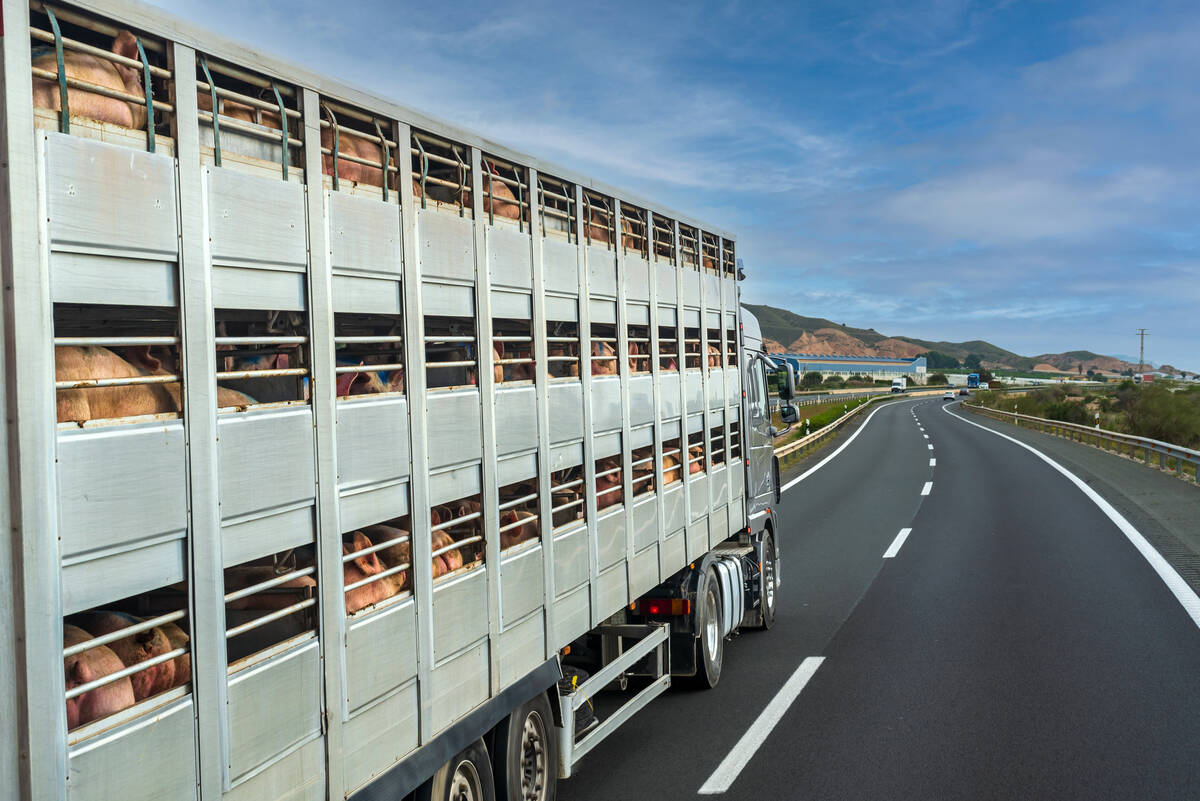Market shortages, especially involving vaccines, are going to be more commonplace in the future.
COVID-19 has affected production lines and distribution networks. Plant slowdowns and closures have put production behind and led to batch failures of vaccines.
The just-in-time production and inventory model the world once thrived on means vaccines shortages are inevitable.
But there are options that can help.
First, spending a bit more to have more inventory available on your farms and ranches can give you more time to ride out a shortfall. As more product is used, large pharmaceutical companies make forecasts and plan for more product in their inventories. However, huge inventories can’t be accommodated because expiry dates can lead to waste if large amounts of product have to be disposed of.
Read Also

Hogs’ transport stress called costly
Poor trailer design and transportation stress are killing pigs and costing the pork industry millions of dollars in penalties, meat quality downgrades and failed welfare audits, according to research by a federal scientist.
It is illegal for anyone to sell expired product and rightfully so, but a mechanism that could test products to determine efficacy during an emergency and extend expiry dates makes sense.
Many larger clinics have larger refrigeration units with alarms to alert staff to fridge failures or temperature fluctuations before products are damaged.
Those systems must be maintained on farms too. As well, producers should make sure the fridge temperature is constant at 4 C or a bit colder, and vaccines must not be stored in the door because every time the fridge is opened, the temperature fluctuates way too much.
In regards to shortages, your veterinarian will know other equivalent vaccines or combinations of vaccines that will give similar protections. It may have one antigen missing, but it would be close.
Producers may even go with intranasal vaccines or a killed vaccine. For example, currently there is a shortage of Bovishield One Shot. It has the biggest market share, so veterinarians and producers who used that product to prevent primarily calf pneumonia could change to the closest modified live products on the market. Those are Pyramid Presponse or Vista Once, which has an additional antigen in it.
These products would be considered interchangeable by most veterinarians. If they run out, there are one or more killed products on the market that are equivalent in disease protections they provide.
Failing that, there is a combination of two intranasal vaccines, Once PMH IN and Inforce IN, that will cover everything except bovine viral diarrhea. BVD cannot be put in intranasal vaccines but your veterinarian may not think that is a big deal for your operation, or you can add in a parenteral vaccine for BVD. Now you have two intranasals and a parenteral vaccine but at least you get the job done.
You could even use a five-way modified live vaccine and Once PMH IN and do the same thing.
My guess is that by the time autumn is over, all these combinations will be close to being sold out, but at least we will have vaccinated the calves.
Keep in mind, especially near the end of the season, that certain clinics may have additional supply if demand turns out to be less than expected so certain lines may be available. You need a request from your vet clinic to pick up modified live vaccines, at least in Alberta because a vet-client-patient relationship must be established.
The major animal health companies operate globally, so a worldwide shortage is possible. The regulatory bodies require that the proper label is attached for each country, so it is unlikely our supplies can be bolstered by another country with adequate supplies. It’s too bad that arrangements can’t be made for extenuating circumstances when the health of the Canadian cattle herd is at stake.
In the swine industry when a certain vaccine was in short supply, some swine veterinarians had clients splitting dosages. It was believed that instead of vaccinating 50,000 grower pigs, splitting the dose would allow for 100,000 vaccinations and that may lead to a more favourable outcome. I’m not saying we should do this with cattle, but it did work favourably in the swine situation, I am told.
Let’s hope by working together and communicating to our veterinarians about the alternatives and combinations that cattle will at least get vaccinated for what they need.

















